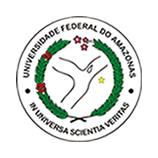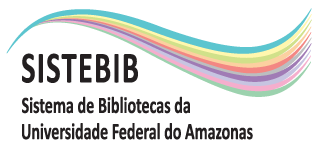| ???jsp.display-item.social.title??? |


|
Please use this identifier to cite or link to this item:
https://tede.ufam.edu.br/handle/tede/11294Full metadata record
| DC Field | Value | Language |
|---|---|---|
| dc.creator | Pinto, Francisco Eduardo de Paula | - |
| dc.creator.Lattes | http://lattes.cnpq.br/5791322317751452 | eng |
| dc.contributor.advisor1 | Magalhães Netto, José Francisco de | - |
| dc.contributor.advisor1Lattes | http://lattes.cnpq.br/3958238119785924 | eng |
| dc.contributor.referee1 | Cavalcante, Marisa Almeida | - |
| dc.contributor.referee1Lattes | http://lattes.cnpq.br/7224775081434545 | eng |
| dc.contributor.referee2 | Padilha, Igor Tavares | - |
| dc.contributor.referee2Lattes | http://lattes.cnpq.br/4605895860650284 | eng |
| dc.date.issued | 2023-02-17 | - |
| dc.identifier.citation | PINTO, Francisco Eduardo de Paula. Ensino híbrido apoiado na teoria da zona de desenvolvimento proximal para o Ensino de Física. 2023. 140 f. Dissertação (Mestrado em Ensino de Ciências e Matemática) - Universidade Federal do Amazonas, Manaus (AM), 2023 | eng |
| dc.identifier.uri | https://tede.ufam.edu.br/handle/tede/11294 | - |
| dc.description.resumo | Este trabalho tem como assunto principal o uso das metodologias ativas dentro da grande área de pesquisa da Educação, seguindo a linha de Tecnologias para Educação, Difusão e Ensino de Ciências e Matemática. Apoiado no ensino híbrido e na teoria da aprendizagem de Vygotsky foi determinado um método que viabilizasse o ensino híbrido de Física em uma escola pública na região da Zona Leste da Cidade de Manaus no Estado do Amazonas dentro de suas peculiaridades de espaço físico, logística de materiais e perfil dos alunos. A pesquisa testou um modelo metodológico ativo que se adequou as necessidades desta escola pública . A investigação foi conduzida de forma participante e analisada qualitativamente, com a participação de 60 indivíduos, sem perdas de participantes no processo, seguindo os fundamentos de pesquisa indicado por Creswell. O trabalho se debruçou na realidade de uma escola que atende alunos de baixa renda, situada em uma zona grande desigualdade social, com pouco acesso as tecnologias voltadas para a educação, sendo assim foi necessária uma análise das ferramentas que os alunos e professores tinham mais acesso, como: o conjunto de ferramentas Google para educação, Experimento Didático, textos de apoio, vídeo aulas e aulas presenciais. O processo de coleta de dados se utilizou de aplicação de testes de conhecimento e retestes para posterior análise de desempenho através de estatística descritiva. O conjunto tecnológico procurou servir como andaime do conhecimento para observação e análise do fenômeno físico fundamentados nas habilidades indicada na nova BNCC para o Novo Ensino Médio. A aplicação do método fez com que os alunos passem a se habituar com o papel de principal atores do processo ensino-aprendizagem e através do desenvolvimento de suas habilidades compreendessem melhor os fenômenos estudados, apresentaram altos índices de acertos nos retestes indicando algum ganho na aprendizagem. Diante disso, o processo de aprendizagem foi conduzido a partir dos conhecimentos que fazem parte da Zona de Desenvolvimento Real dos alunos definindo quais conhecimentos foram adquiridos pós processo. Assim, por vias de mediação tecnológica o pesquisador, junto a Zona de Desenvolvimento Proximal dos alunos, realizou um trabalho de desenvolvimento, adaptação e aplicação das habilidades dos alunos, conduzindo uma certa individualização do ensino. Por fim, a metodologia teve uma lupa metodologia e formal de classificação de aprendizagem a teoria da Zona de Desenvolvimento Proximal de Vygotsky, tornando possível que o pesquisador acompanhasse de forma científica o crescimento e desenvolvimento das habilidades dos estudantes. | eng |
| dc.description.abstract | This work has as its main subject the use of active methodologies within the large area of research in Education, following the line of Technologies for Education, Dissemination and Teaching of Science and Mathematics. Supported by hybrid teaching and Vygotsky's theory of learning, a method was determined that would enable the hybrid teaching of Physics in a public school in the East Zone of the City of Manaus in the State of Amazonas within its peculiarities of physical space, logistics of materials and student profile. The research tested an active methodological model that suited the needs of this public school. The investigation was conducted in a participatory manner and analyzed qualitatively, with the participation of 60 individuals, without loss of participants in the process, following the fundamentals of research indicated by Creswell. The work focused on the reality of a school that serves low-income students, located in an area of great social inequality, with little access to technologies aimed at education, so it was necessary to analyze the tools that students and teachers had more access to , such as: the set of Google tools for education, Didactic Experiment, supporting texts, video classes and face-to-face classes. The data collection process used the application of knowledge tests and retests for subsequent performance analysis through descriptive statistics. The technological set sought to serve as a scaffolding of knowledge for observation and analysis of the physical phenomenon based on the skills indicated in the new BNCC for New High School. The application of the method made the students get used to the role of main actors in the teaching-learning process and, through the development of their abilities, they could better understand the studied phenomena. In view of this, the learning process was conducted based on the knowledge that is part of the students' Real Development Zone, defining which knowledge was acquired after the process. Thus, through technological mediation, the researcher, together with the students' Proximal Development Zone, carried out development work, adaptation and application of students' skills, leading to a certain individualization of teaching. Finally, the methodology had a magnifying glass methodology and formal classification of learning the theory of Vygotsky's Zone of Proximal Development, making it possible for the researcher to scientifically follow the growth and development of the students' abilities. | eng |
| dc.description.sponsorship | FAPEAM - Fundação de Amparo à Pesquisa do Estado do Amazonas | eng |
| dc.format | application/pdf | * |
| dc.language | por | eng |
| dc.publisher | Universidade Federal do Amazonas | eng |
| dc.publisher.department | Instituto de Ciências Exatas | eng |
| dc.publisher.country | Brasil | eng |
| dc.publisher.initials | UFAM | eng |
| dc.publisher.program | Programa de Pós-graduação em Ensino de Ciências e Matemática | eng |
| dc.rights | Acesso Aberto | - |
| dc.rights.uri | https://creativecommons.org/licenses/by-nc-nd/4.0/ | pt_BR |
| dc.subject | Física - Estudo e ensino (Ensino médio) | por |
| dc.subject | Ensino híbrido | por |
| dc.subject.cnpq | CNPQ::CIENCIAS HUMANAS::EDUCACAO::ENSINO-APRENDIZAGEM | eng |
| dc.title | Ensino híbrido apoiado na teoria da zona de desenvolvimento proximal para o Ensino de Física. | eng |
| dc.type | Dissertação | eng |
| dc.subject.user | Ensino Híbrido | por |
| dc.subject.user | Zona de Desenvolvimento Proximal | por |
| dc.subject.user | Ensino de Física | por |
| Appears in Collections: | Mestrado em Ensino de Ciências e Matemática | |
Files in This Item:
| File | Description | Size | Format | |
|---|---|---|---|---|
| DISS_FranciscoPint_PPGECIM | 4.92 MB | Adobe PDF | Download/Open Preview |
Items in DSpace are protected by copyright, with all rights reserved, unless otherwise indicated.




